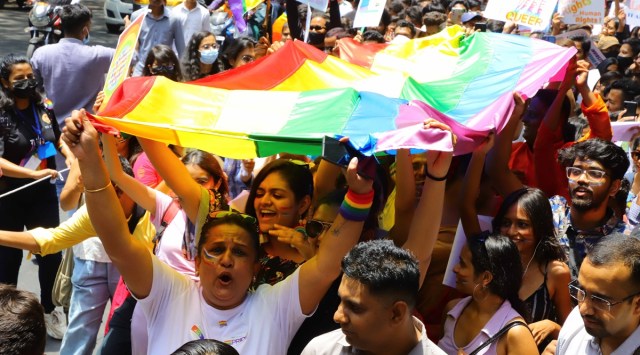
Written by Bhavya Gupta
The day part of Section 377 was repealed, I, like several other queer and trans people around the country, hoped for and expected a future of equal citizenship – a future in which expression, personal choice, private spaces and differential identities would be respected. What many of us celebrating at the Supreme Court underestimated was the rigidity in our culture, limitations of language, and an urgent need for various other legal reforms in the country. Four years after the repeal of part of Section 377, and my memory of the day is ironically plagued by my queer friends facing repercussions of being outed without consent while celebrating at the Supreme Court.
While the judgment held enough weight to change queer and trans lives in the country – since its delivery – the evolution of rights and legal recourse for queer and trans people remains stunted. The September 6 judgment remains the sole crutch in our legal repository, with much else left unaddressed amid a growing trend of violence against LGBTQI people.
The larger structure in the country continues to rely on narrow definitions of the LGBTQI community, based on western ideals. The ideal queer remains cis-gendered, upper-caste, elite, and English-speaking. Someone with the resources to be able to resonate with and acquire qualities of the “modern queer”. India is a country with plural cultures, and identities that stand at various intersections of caste, class and gender. This nuance is alien to a majority of the current conversations on gender and sexuality. This matters more so for a community for whom marginalisation is often compounded due to these very intersections.
The capitalisation of marginalised queer bodies stands at the centre of Pride Month. However, the regressive Transgender Act that is entrenched into the everyday life of the transgender and nonbinary community continues to remain a stark reality. The transition from laws to lives is an invisibilised one wherein queer and trans people are forced to encounter a severe lack of safety, care, and love every day.
Amid loud proclamations of “Love is love”, what we forget to question is: Is being queer solely about loving? More so, who can “come out” safely? We forget about the queer or trans person for whom reform is more a matter of life and death than being able to enjoy a romantic relationship. We forget that despite the rainbow flags on the road, queer people continue to live dual lives due to the severe lack of legal, familial and social support.
Queer and trans people must be supported outside of landmark judgments and specific months of the year. That they are recognised outside of their desire to “come out” or “love”. And that they are recognised as an intersectional group with varied requirements for safety, care, and justice by the legal institutions, movements as well as other queer and trans people of privilege. To be queer outside fetishised definitions and cis-gendered heteronormative standards is to live lives hemmed in by unjust barriers. The ideas surrounding intimacy and desire are not solely related to the act of sex or the body but spread into the realm of the larger queer experience, wherein imitation of the heterosexual becomes imperative to survival.
To recognise that queer and trans emancipation cannot be limited to the repeal of a judgment is to recognise the complexities of language, grief and solidarities that sit at the centre of these lives. As unsettling as the thought may be, most queer and trans identities remain hidden and sidelined more by choice than force, due to the acute lack of knowledge, as well as accessible knowledge production. A life of dignity and equality, unfortunately, remains solely aspirational for most queer and trans people within the country.
The writer is a researcher at the department of women and gender studies, Savitribai Phule Pune University